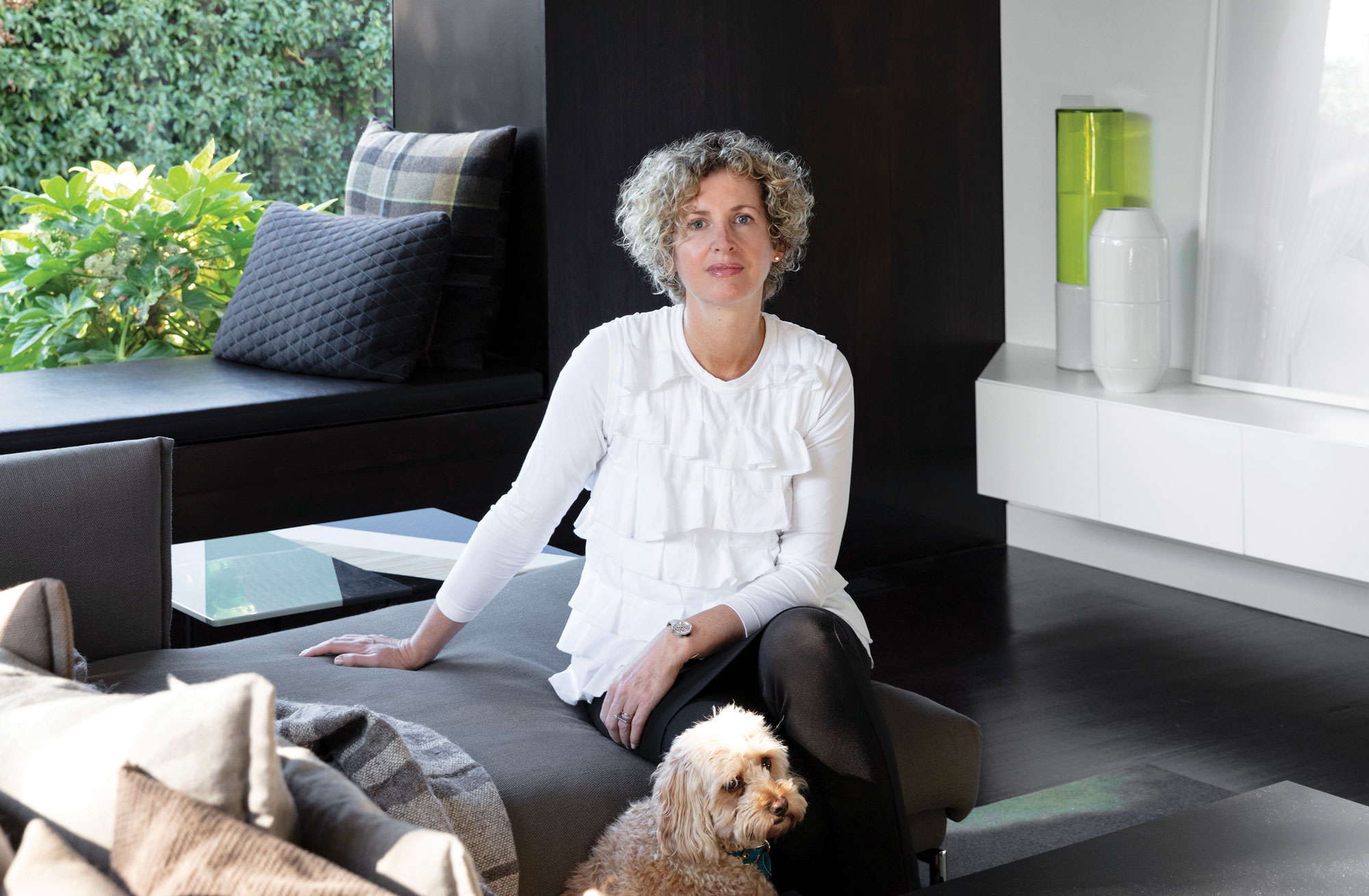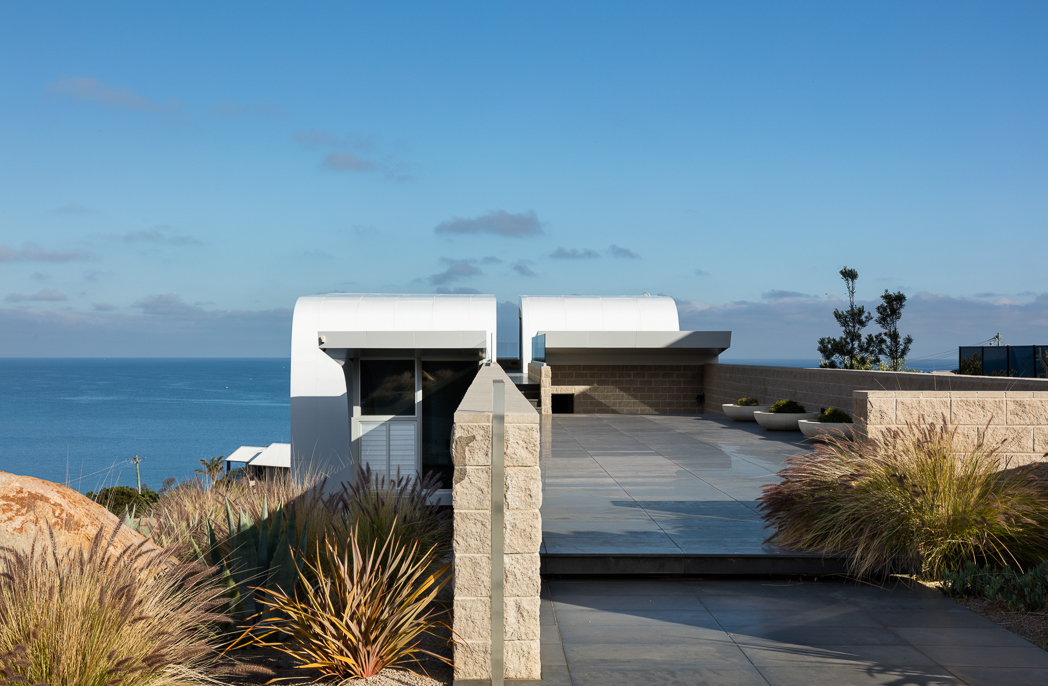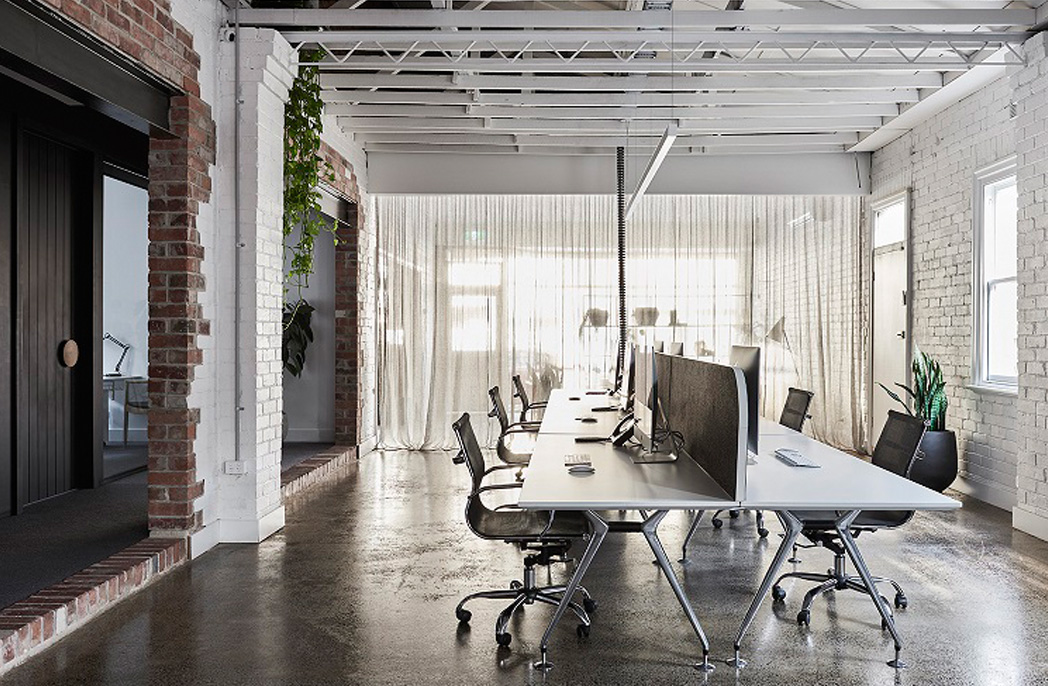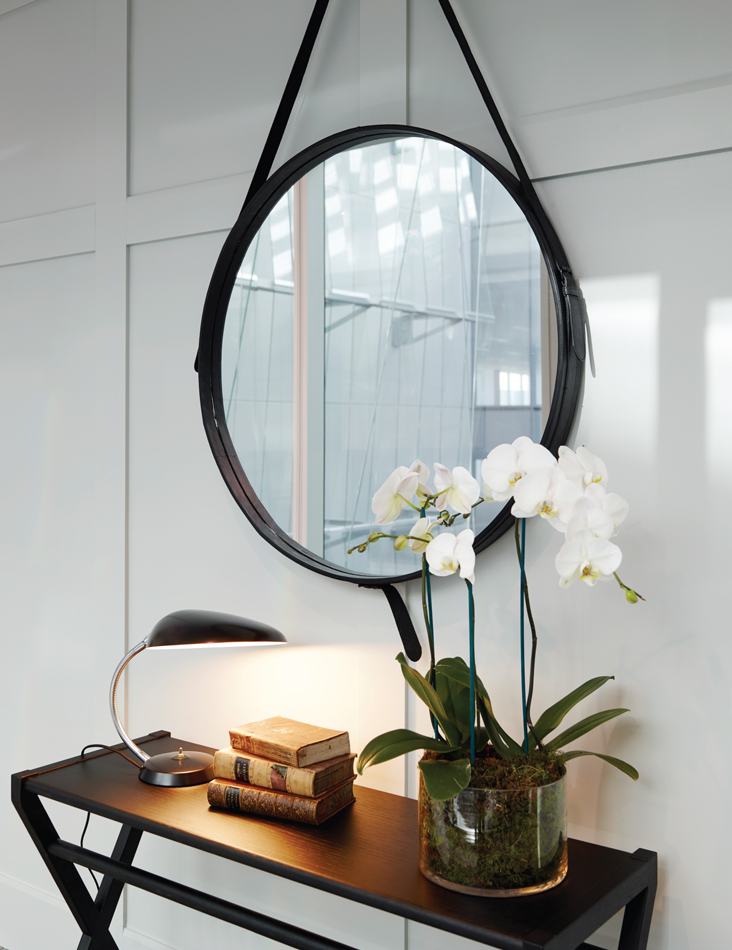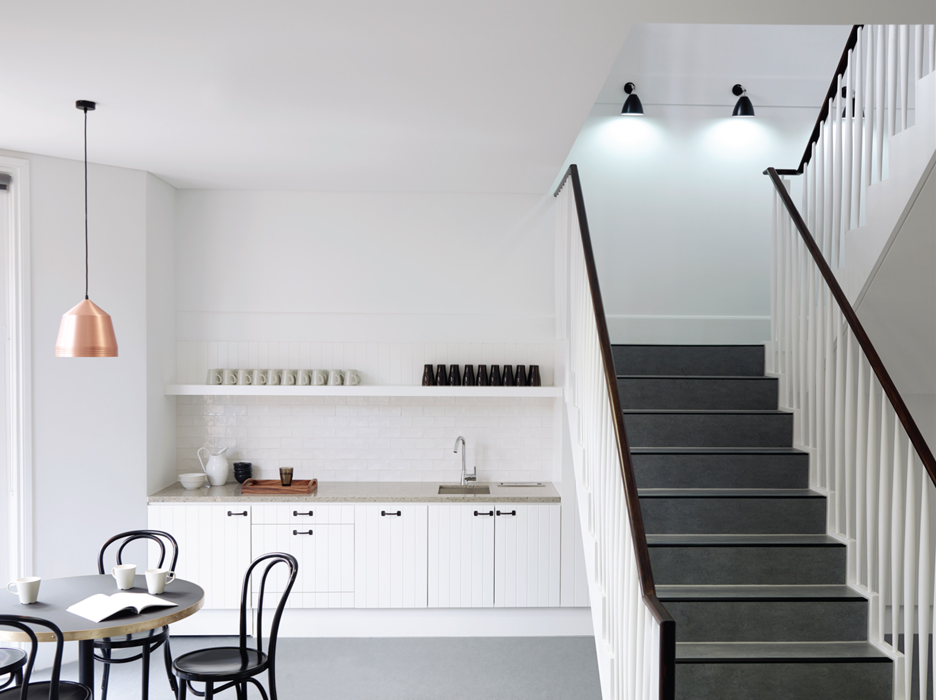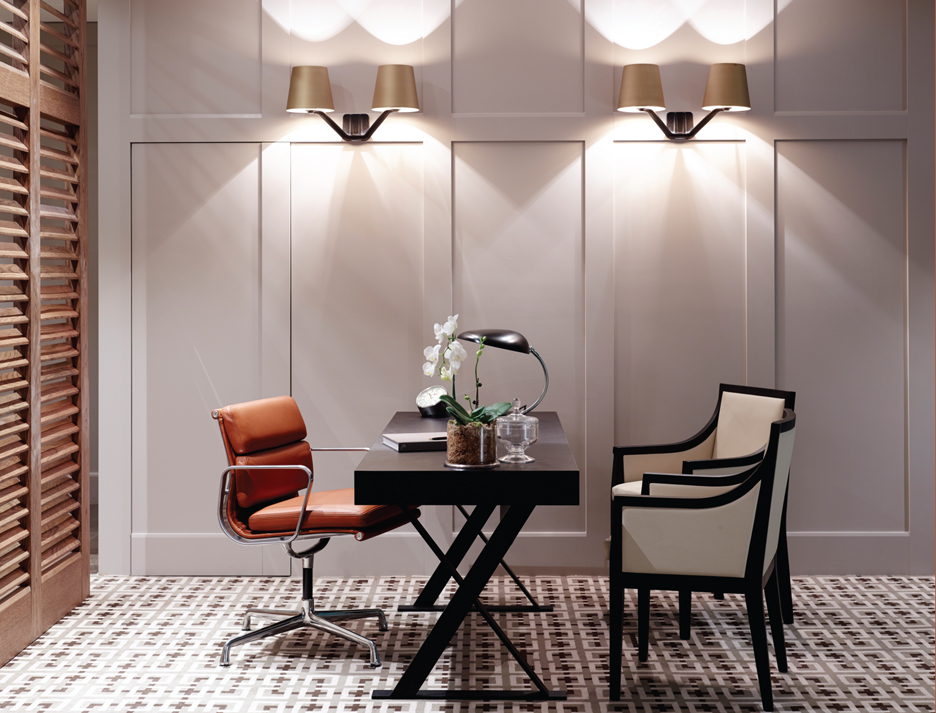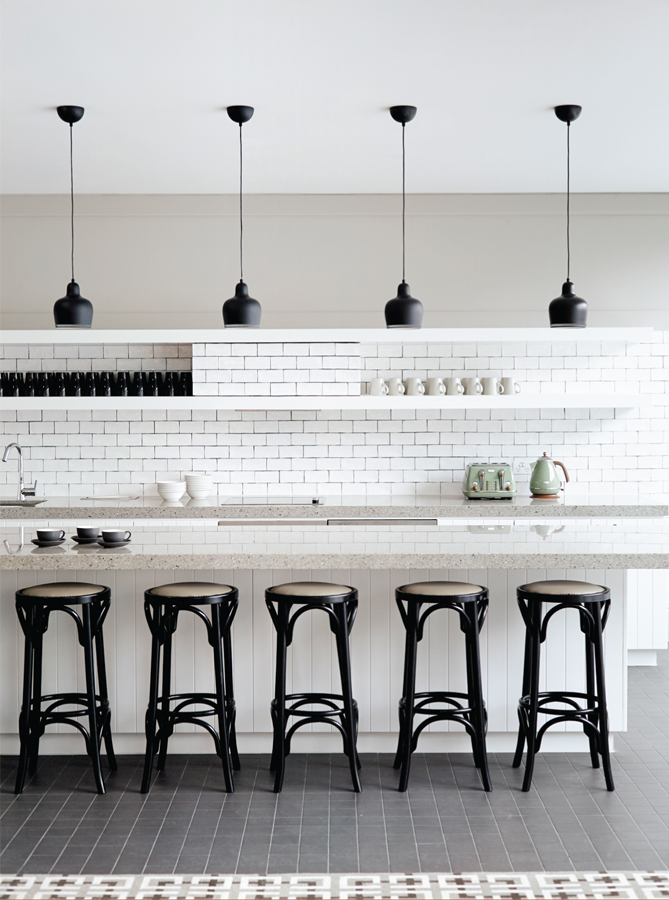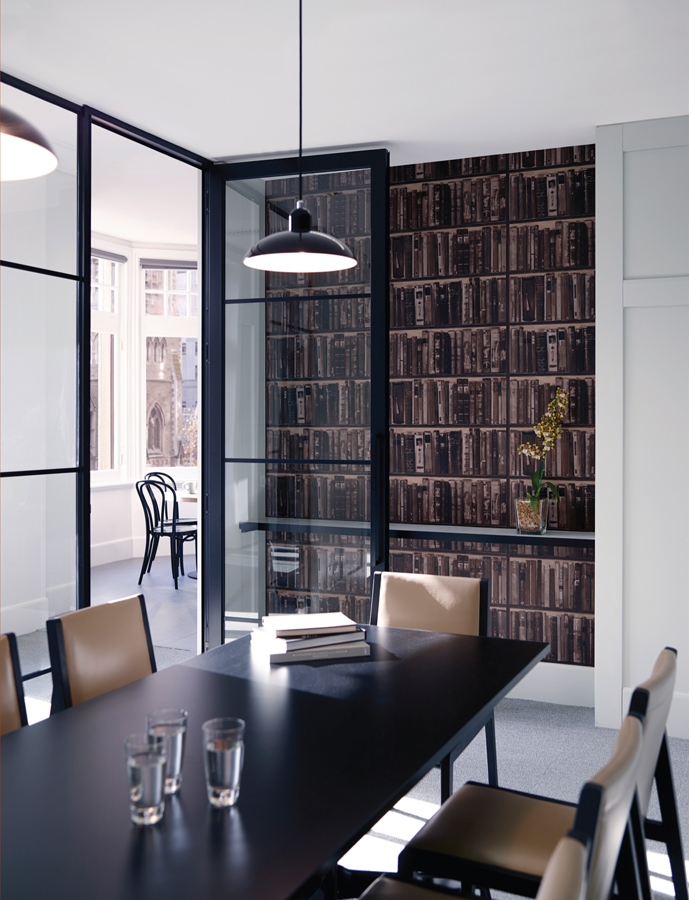
Bates Smart’s interior for Evans & Partners
Bates Smart’s interior for Evans & Partners
Share
Location: Melbourne, Australia
Design: Bates Smart
Text: Maitiú Ward
Photography: Mark Roper
“Private client stockbroking firms are failing to satisfy affluent and wealthy customers […] top end clients increasingly look to online brokers,” said the article, ‘Why Australians are abandoning stockbrokers’, in the Financial Review in July of last year.
It’s a familiar story – another musty business model succumbs to the disruptive effects of the internet. You may even wonder why we had not seen a eulogy earlier. Of the industries that have suffered in the rise of the digital economy, stockbroking deals more explicitly than most in the trade of information, the internet’s lifeblood and the commodity it most readily and ruthlessly exploits.
Evans & Partners is a private stockbroking firm. It was established in 2007, right when the increasingly abstract, and consequently opaque, nature of the modern investment world was making itself felt in a very real way through the global financial crisis (GFC). Its founder and managing director David Evans, probably best known as the former chairman of the beleaguered Essendon Football Club, started the firm from his home in suburban Melbourne after leaving a role as head of equities at JBWere, a local affiliate of global investment behemoth Goldman Sachs.
Big investment companies, his former employer included, were shifting the focus away from private client markets. Simultaneously, investment in stocks had become an increasingly intimidating prospect for most non-professionals. Evans identified this as an opportunity and began Evans & Partners as a self-described ‘back to basics’ investment firm for private money.
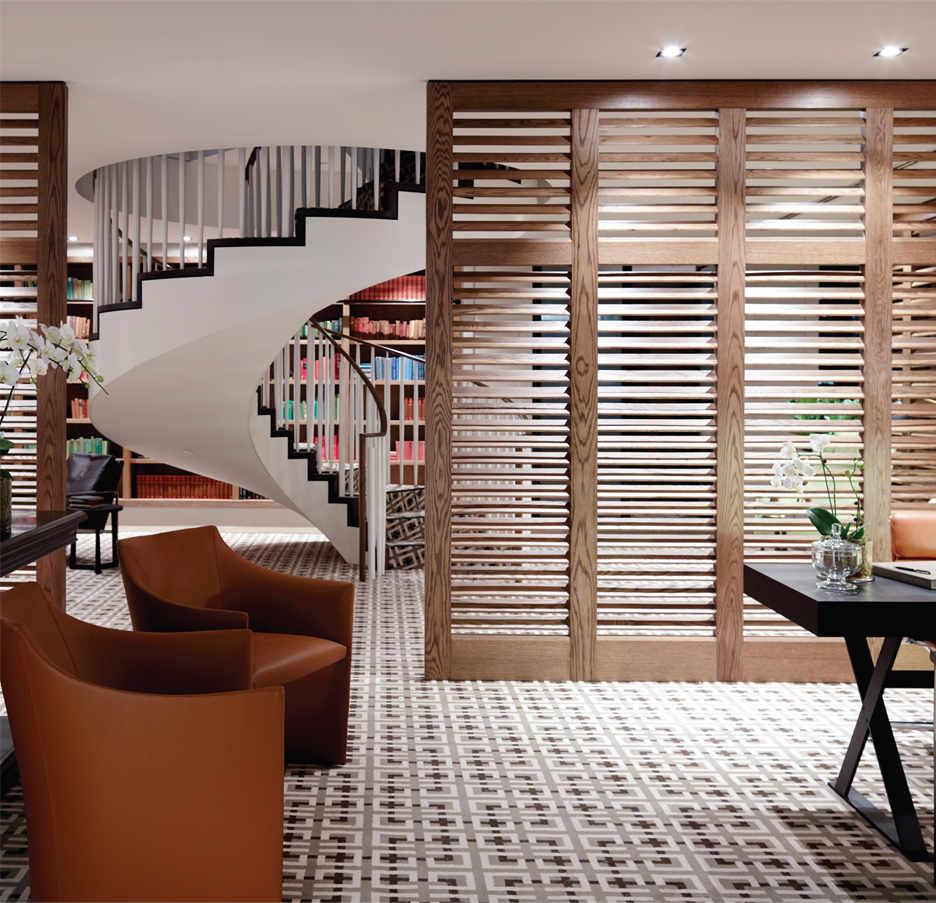
A centrally located spiral staircase lends an intimacy to the lounge more usually found in a domestic environment
For the past few years, the company has been spread across multiple premises, including a terrace house in East Melbourne. Late in 2013, it moved into a brand new workspace, a purpose-built 1700-square metre integrated fitout in 171 Collins Street, Melbourne. This commercial development, designed by Bates Smart, incorporated a new tower, fronting onto Flinders Lane, as well as the reconstruction of the Mayfair, a character building with a Heritage-listed façade and the proper owner of the prestigious 171 Collins Street address. Evans & Partners took out seven of the eight levels of the latter; luxury fashion brand Dolce & Gabbana snapped up the street-level retail tenancy for its flagship Australian store.
It is not hard to see what a young investment firm, anxious to prove its mettle and trustworthiness, might find attractive about a building like the Mayfair. A grand dame in the rarefied surrounds of Collins Street’s ‘Paris end’, the Mayfair is about as close as Australian architecture gets to the whiff of old money.
Designed by Melbourne architect Nahum Barnet for the theatrical firm J and N Tait in an elaborate Romanesque Revival style and completed in 1913, the building was originally a concert hall, before becoming a cinema and then a shopping mall. The theatrical spirit lives on in this latest incarnation – behind the mask of the Mayfair’s venerable, north-facing façade there is essentially a completely new building, boasting a glazed southern façade overlooking the nine-storey high, travertine clad internal atrium of the 171 development.
Bates Smart’s fitout for Evans & Partners also has more than a hint of drama to it. As associate director Grant Filipoff explains, the client wanted the office to evoke the atmosphere of a traditional American private club. It is a brief that could so easily descend into kitsch, conjuring up a Ron Burgundy-esque vision of rich mahogany and leather-bound books, but Bates Smart settled on a strategy of eclecticism, combining contemporary and classic mid-century design with more traditional elements.
Yes, the resulting interior does feature lots of leather-bound books and timber (albeit oak). Mixed in among this, however, are choice design pieces that include Eames chairs, Greta M Grossman’s Cobra table lamp (exuding all the dangerous 1940s glamour of one of Raymond Chandler’s femme fatales), and even contemporary Australian gems, like the spun copper Mr Cooper Pendant by Coco Flip.
The hope is that the interior collection lends the appearance of having been accumulated over time. In fact, some of the pieces are the result of just that, with a few genuine antiques coming across from the firm’s older tenancies (including Evans’ ‘grandfather’s grandfather clock’, as it’s known in the office). A bespoke carpet embellished with a neo-classical geometric motif ties this ensemble together elegantly.
Bar a slight fumble with the ‘bookshelf’ wallpaper in some of the meeting rooms (way up Ron Burgundy creek, this, but without the parody), Bates Smart has pulled off a fine balancing act – the interior feels vaguely club-like without being stuffy, conservative and yet contemporary, stylish without being overly showy. It’s a synthesis of the American blueblood aesthetic and, as such, Ralph Lauren himself could not have done a better job. It would be easy to make light of these efforts as smoke and mirrors, of course, an ersatz gentlemen’s club for private stockbrokers reliving the imagined, cigar-scented glory of days gone by while their profession collapses under the strain of powerful, ‘new economy’ imperatives.
Far from being nihilistic escapism, though, Evans & Partners employs this indulgently nostalgic décor in a very calculated way. The top two floors of the building, which include the offices of the executive team and the reception area, are also designed to be used by the firm’s clients – as offices, meeting rooms and even an entertainment space, much like a real club might be used by its members. With its invitingly commodious, light filled interior, generous outdoor entertaining area and well-equipped kitchen, the fitout in this sense becomes a value-added service, a tangible benefit of doing business with a firm in the ‘real’ world.
Conversely, you would have to imagine it also allows Evans & Partners to build much stronger, genuine relationships with its clientele. Early reports bear this out. Clients of the firm have used the offices for everything from meetings to a private escape from the city – even, for one end of year party, a tap dance performance.
In other respects too, the back-to-basics approach seems to be paying dividends. Far from flailing in the wake of the surging digital economy, Evans & Partners is on the up. Last November, a scant three-and-a-half months after its doom-mongering on the state of private stockbroking, the Financial Review ran a report on Evans & Partners’ ‘impressive’ results for the year, which saw profits rise by 63 percent to $6.88 million.
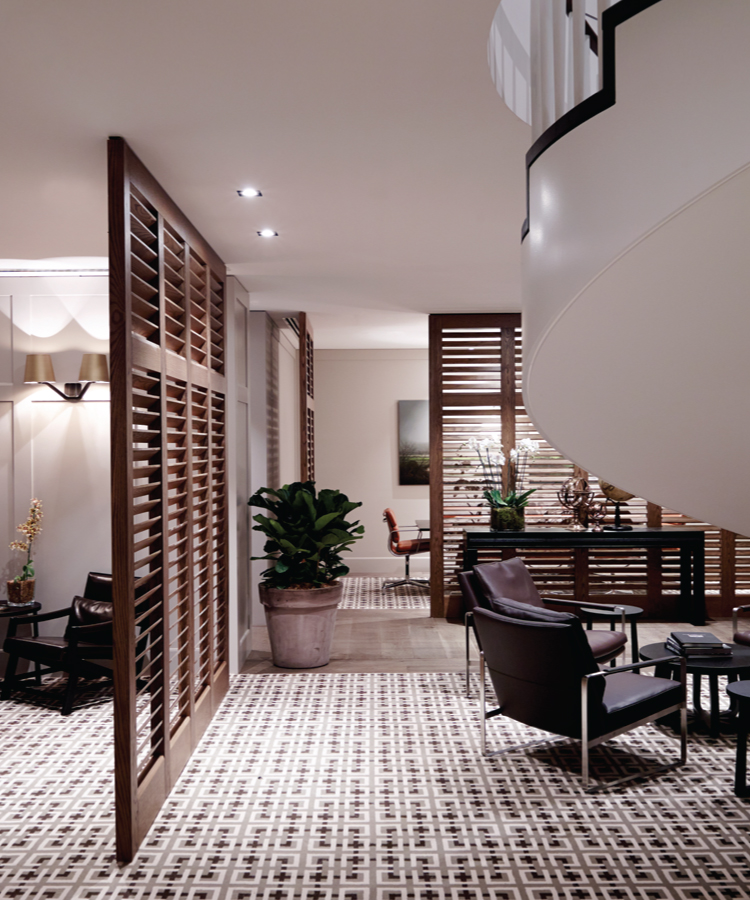
Partitioning screens of louvered timber create areas of personal scale without truncating visual volume
Has Evans & Partners’ back-to-basics approach benefited from its back-to-the-future fitout? It is difficult to say. Online brokers, though, do not do leather and timber, nor do they play host to tap dancing parties. In fact, they do not offer any of this interior’s little, human luxuries, not even a comfortable place to come and quietly talk business. These are values, you could say, which you cannot put a price on.
Lead image: Eames Boardroom Table and Eames SoftPad Chairs, both by Herman Miller (Living Edge)
You Might also Like
